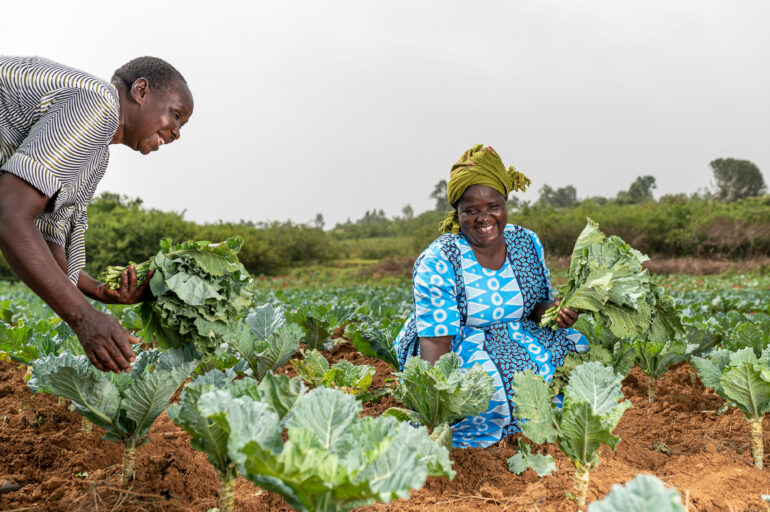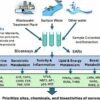As climate change shifts precipitation patterns, irrigation can be a powerful tool for increasing the world’s food supply—feeding more than a billion additional people without converting natural spaces into farmland, according to a new study by Carnegie’s Lorenzo Rosa published in Environmental Research Letters.
“Population trends indicate that we will need to double global food production by 2050,” Rosa explained. “To accomplish this, we will either need to clear more land or farm more efficiently, despite the increased stresses of a warming world.”
Converting undeveloped land into farms exacerbates climate change and decreases biodiversity. But low crop yields in existing farmland can be improved by modern technology.
“However, it’s crucial to evaluate these intervention strategies to see which ones will lead to the greatest increase in food production and the lowest environmental impact,” Rosa said.
Currently, two-thirds of the world’s crops are limited by rainfall. Climate change is expected to both shift precipitation patterns and increase heat stress on plants, meaning that relying on rain alone will not keep up with the increased demand for food.
One strategy for improving the productivity of farmland is irrigation. Studies show that irrigated crops are twice as productive as those that rely on rainfall alone. However, irrigation already accounts for between 85 and 90 percent of human water consumption. Is it possible to use irrigation to increase food production without creating water shortages?
Sustainable irrigation relies on groundwater and local available water sources, without depleting them beyond what precipitation can replace or harming freshwater ecosystems. Rosa set out to determine whether these strategies could be expanded to maximize agricultural productivity and minimize the negative environmental impacts of water use.
He found that under current conditions, there is enough water available from local, renewable sources to expand sustainable irrigation over 35 percent of farmland around the world, boosting crop productivity to feed 1.4 billion more people.
However, climate change will make this calculus more complex.
As the world warms, Rosa’s analysis indicates that in addition to heat stress and changes in rainfall, climate change could also make water evaporate faster, decreasing the efficiency of irrigation. On the other hand, elevated levels of atmospheric carbon dioxide could make crops grow somewhat more productively, which might offset this concern. All these competing factors mean that additional research is needed to comprehensively understand the feasibility of sustainable irrigation for increasing food production.
That said, Rosa’s study indicates that constructing long-term water storage reservoirs could enable sustainable irrigation to feed 1.2 billion more people than relying on renewable water resources alone.
Rosa indicates that the United States, Russia, Brazil, and Nigeria have the greatest potential for sustainable irrigation under extreme warming conditions using water storage facilities, although these types of programs will also be feasible in Latin America, Eastern Europe, and Sub-Saharan Africa.
There are still outstanding questions to address in subsequent research projects regarding the potential affects that sustainable irrigation strategies could have on water quality because of increased fertilizer use, as well as the socio-economic and land-use impacts of constructing water-storage infrastructure.
However, Rosa’s study makes a clear case that sustainable irrigation could alleviate poverty and hunger, while decreasing the environmental risks of clearing natural land for agricultural purposes.
“Ensuring sufficient and equitable access to food while reducing agriculture’s environmental impacts is one of the greatest societal challenges of the 21st century,” Rosa concluded. “This work demonstrates that careful deployment of irrigation can help the world meet these demands with minimal environmental impacts.”
More information:
Lorenzo Rosa, Adapting agriculture to climate change via sustainable irrigation: biophysical potentials and feedbacks, Environmental Research Letters (2022). DOI: 10.1088/1748-9326/ac7408
Provided by
Carnegie Institution for Science
Citation:
Sustainable irrigation can feed billions, make agriculture resilient to climate change (2022, June 13)



